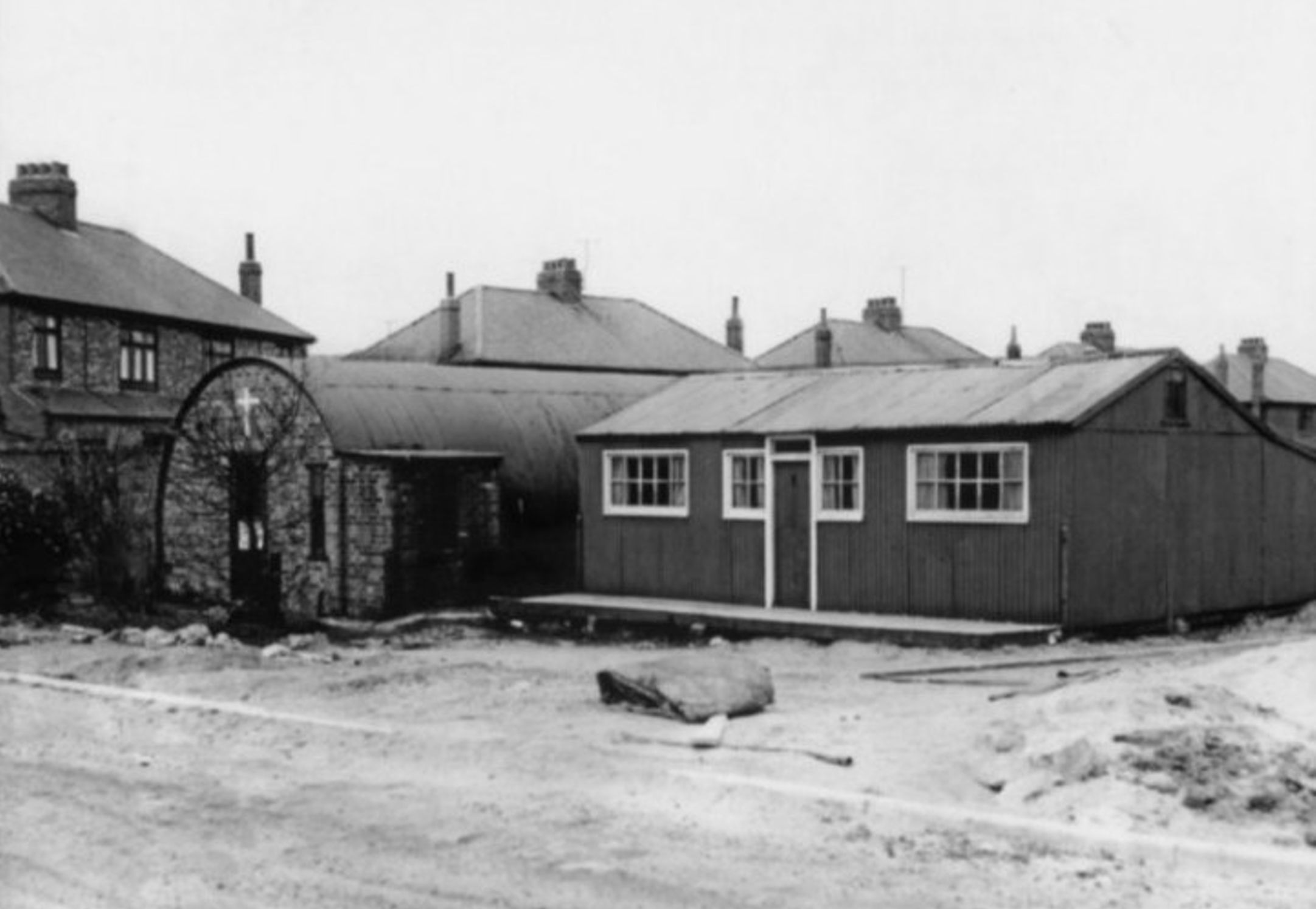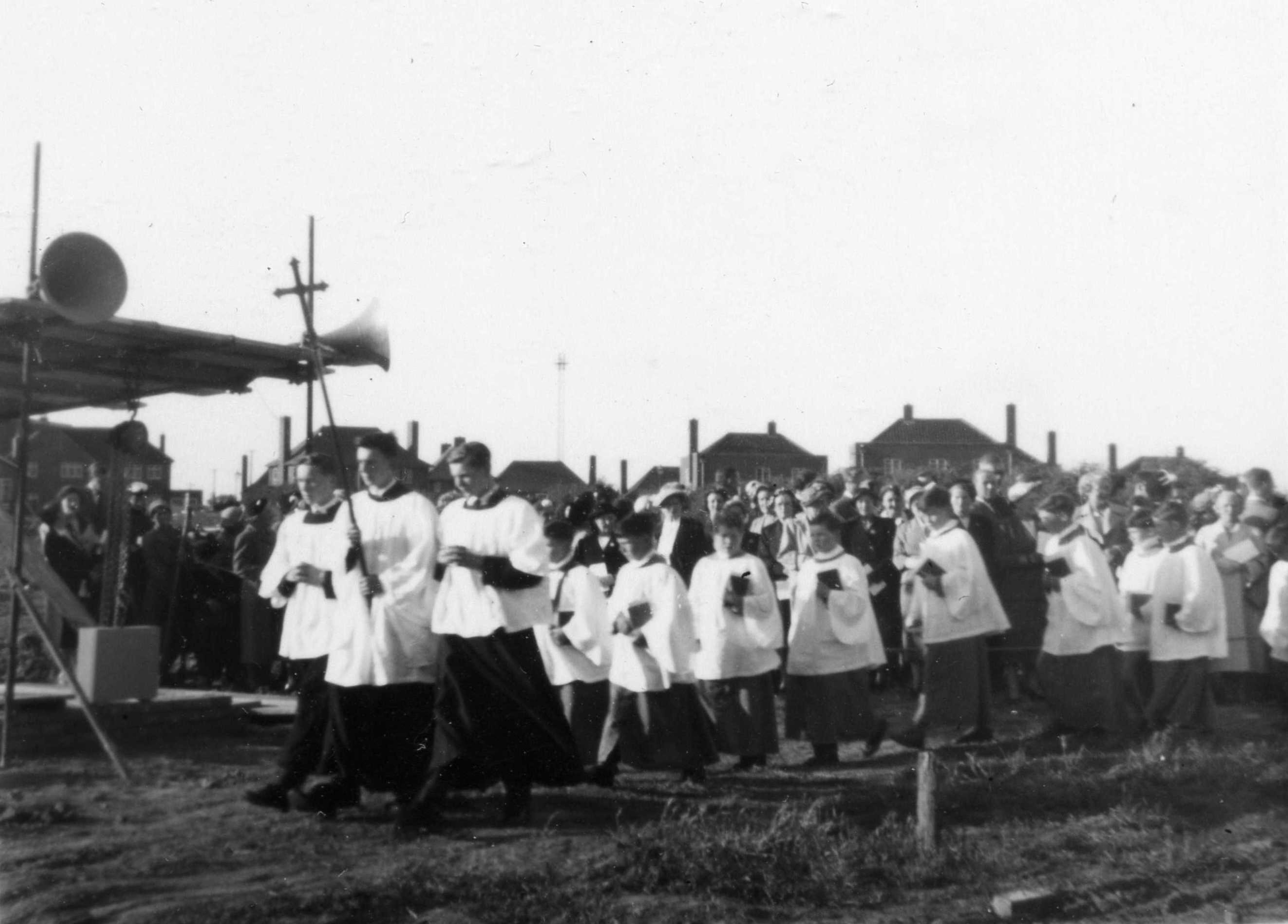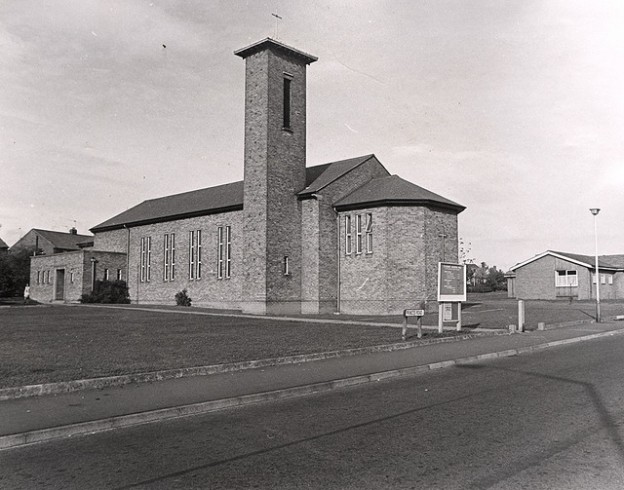Our Story
The story of St. Aidan’s begins in the late autumn of 1944 on a very much smaller Brunton Park Estate to the one we now know. At this time the estate was bounded by Westwood Road and Clayworth Road, behind which lay only allotments and fields. Unlike the situation enjoyed today, there were no facilities on the early estate, apart from a public telephone box at the entrance to Polwarth Drive and a small kiosk at the start of Brunton Lane.
That said, the home of Mrs. Beck at 1 Polwarth Drive soon became a very significant facility indeed. It was in this house that the church on Brunton Park first met in the guise of the ‘Saturday Sunday School.’ This venture proved most popular and enjoyed rapid growth, so much so that two further houses were required very quickly to accommodate the fifty-four children who were attending.
Around this time the Reverend Cecil Gault, Rector of the Parish of St. Columba, Seaton Burn, convened a meeting to discuss the need for a church at Brunton Park. This meeting was well attended, the proposal was received enthusiastically and a small group of men and women were formed to formally start a church.
Fortuitously, at the very same time the Northern Rugby Club pavilion was de-recquisitioned (having been secured for use as a mortuary in the event of the estate being bombed during the Second World War). As such, an obvious opportunity emerged and an agreement was made with the Northern Rugby Football Club for the new church to hire their pavilion for Sunday worship and social events. As one would imagine, an inordinate amount of work went into preparing for and resourcing the first service. However, on Christmas Day 1944 a congregation of more than one-hundred people gathered to celebrate Holy Communion and on 31st December 1944, the following Sunday, two Sunday Schools also moved into the Pavilion and began to meet.
This commitment to working with the young people of the area was furthered by the Reverend M. Hodgson, Assistant Curate of St. Columba’s, who, aided by a band of willing helpers, organised Cub, Scout, Brownie and Guide meetings.
The Time of the Tin Tabernacle
After the end of the war, plans began to provide a Church building on Brunton Park. Brigadier-General Laycock had already gifted an acre of land for a Church when the estate was fully developed.
However, in the meantime the plot of land which is now 31 Polwarth Drive was given over as a site for a ‘temporary Church’. In October 1945 the momentous decision was taken as to what form this ‘temporary Church’ would take when a Nissen Hut (60ft x 15ft) was purchased, dismantled and transported from East Boldon and re-erected on Brunton Park.

Inside the hut two partition walls were constructed ten feet from each end; these walls provided an entrance hall and tiny kitchen at one end and a small vestry at the other. After a great deal of discussion, electric lighting was installed and ‘black heat radiators’ were suspended from the ceiling.
People remember well the experience of having extremely hot heads and frozen feet, as-well as the sight of teenage girls routinely fainting as a result! The seating consisted of a combination of chairs and wooden benches with rubberised felt cushions, previously used as back rests in the bomber turrets of American Air Force planes, being
re-employed as kneelers.
A ship’s bell was mounted on a tubular metal gantry outside the vestry and was rung each Sunday to call people to worship; this same bell hangs in the tower of St. Aidan’s today and continues to be used each week. After tremendous efforts, and because of the generosity of many people, the hut was eventually ready for use as a dual-purpose building and on 4th May 1946 The Rt. Rev’d Noel Hudson, then Lord Bishop of Newcastle, came to bless the hut for use as a Church and community building.
Before long the Nissen Hut on Polwarth Drive came to be known as ‘The Tin Tabernacle’ but was always used for a truly wide range of activities.
The hut served as the Maternity and Child Welfare Clinic, saving mothers from pushing their prams to the clinic on Church Road, Gosforth. It also naturally became the home of the Brownies, Guides, Cubs and Scouts, as-well as becoming a hub for all sorts of social activities, including whist and bridge drives, bazaars and dances. In addition, there was also a Table Tennis Club and a Gardening Club. Mrs. Stansbie produced many well remembered plays, with ‘Toad of Toad Hall’ being perhaps the most well renowned!
All that was happening in the life of the new church on Brunton Park was further recognised, following the arrival of The Reverend Frederick Mountney as Rector of the Parish, when the decision was made that there should be a Priest-in-Charge of St. Aidan’s, whose job it would be to build on the work begun here, supporting the growth of the Church and the new community of which it was a part. Subsequently, on 5th February 1949, The Reverend John Burdon arrived as the first Priest-in-Charge, serving here for the next three years.
Building-up the Church and our Community Together
During the early 1950’s the full development of post-war housing saw Brunton Park rapidly growing towards its current size, as-well as the emergence of the new Melton Park. As the new housing estates grew the people of St. Aidan’s realised that the present Church building was no longer adequate.
After considerable fundraising efforts, negotiations began for the building of a new and permanent Church. At this time St. Aidan’s were blessed to have an architect – Mr. Fred Herron – as a member of the congregation and he got to work on designing another multi-purpose building which would be built on the land which General Laycock of Low Gosforth had donated.
Fitting with St. Aidan’s ministry to the community there has always been flexible seating in the Nave, the original floor was treated with chalk to allow for dancing, the West End was equipped with a stage and at either side of this there were two small rooms.

The foundation stone of the new St. Aidan’s was laid on 7th June 1955.
The foundation stone of the new St. Aidan’s was laid on 7th June 1955 .
The building was completed and dedicated by the Bishop of Newcastle on 4th May 1956.
Just like ‘The Tin Tabernacle’, the new building was used extensively by the community at large whilst also allowing new opportunities for the ministry of the Church.

By 1958 the needs of the community, particularly the younger members, outstripped what could be achieved out of St. Aidan’s alone.
After discussions with the Parochial Church Council and Northumberland County Council agreement was reached for the erection of the present Community Centre on land belonging to the Church.
In March 1963 St. Aidan’s Community Centre was opened, allowing St. Aidan’s Church to be consecrated and ‘set apart for the worship of Almighty God.’
On 4th May 1963, the church was consecrated and a stone to mark the occasion was brought from the Chapel of Ease on Melton Park, dressed and inscribed with the date. This stone was placed on the north wall of the Sanctuary and continues to remind us of the different people and places which the Church in our neighbourhood has served and will go on serving.
Contact
Contact the Parish
Administrator,
Janice Charlton
on 0191 236 7952
or email
infostaidans@gmail.com
Facebook
Instagram
